Adventures, Fun & Attitude: Selected grams from Ikaria ♥ Part 3 ➕
Δημοσιεύθηκε: 8 Απριλίου, 2018 | Συντάκτης: Eleni | Filed under: choses vécues, exploring, festivals, hiking, holidays, ikaria, photography, pleasure, stories, travel, Uncategorized | Tags: adventure, adventures, aegean, August, beach, blog review, camping, dreams, Greece, hiking, hiking trails, ikaria, ikariagram, ikarians, instagram, ικαρία, μονοπάτια, literature, my life, photostory, portraits, rahes, stories, summer 2017, Trapalou, travel | 8 Σχόλια……
❀ ❀ ❀ ❀ ❀ ❀ ❀ ❀ ❀ ❀ ❀ ❀ ❀ ❀ ❀ ❀ ❀
Hello readers!
This is obviously the third part of the second part and the first part. But in this post there is a big [[➕]]! Because as I was browsing through Instagram to choose some last pictures from Ikaria to show you, I looked again at a picture I had added in PART 1 and I realised that it wasn’t just one random holiday snaphot. More pictures followed and all of them belonged to a story – a story written in a blog!
But first things first. Take a look at my last 50 selected grams from Ikaria and then scroll down to read my English translation of Virginia’s «Sobre una mujer sola en una playa». As you will see in the end, I have reasons to cherish very strong personal feelings about it. But far besides that, what matters more is that I find her adventure and more importantly the way she describes her adventure the best to this moment, most edgy and wonderfully dramatic example of the attitude I’ve spoken about in Part 2:
«Enjoy and respect. This is the new DIY generation who are not looking for ready-made things but for the true experience, for whatever that takes.»
……………………..⭐ ⭐ ⭐ ⭐
Note: I have displayed the pictures randomly and democratically all same size. None of them (including the ones inside the Virginia’s story) have been downloaded but embedded into this post directly from the source. All rights reserved by the respective owners © 2012-2017
.
.
…
«Sobre una mujer sola en una playa»
(About a woman alone on a beach)
«Later that evening, we were sitting there and I could hear a church bell from the Orthodox church around the corner. My ear followed the sound there and back, there and back, my eye trailing the distance to the church in the dark. I asked my aunt if she was awake. She stirred in her chair and said yes, she was. I said, how did you make it so long. She asked what I meant. I said, there are so many years. How can you be alone so long. She said she didn’t know.»
[Jesse Ball, How to Make a Fire and Why]
«Last year with Adrián we decided to take a trip. He asked me where I wanted to go, and I told him that for some time I had in my thoughts the island of Ikaría. He wondered why. I do not know, I told him. He asked me again: what is there? Nothing, I said. It is an island where there is nothing. He told me, that’s an answer.»
«He asked me again: what is there? Nothing, I said. It is an island where there is nothing. He told me, that’s an answer.»
«There was a turning point in the trip and it was the day of the monopati. By then I already had severely infected soles of the feet. I think about the precise moment, a few days before, in which the blisters that almost completely covered the metatarsals broke and I still get goosebumps. I remember it with my head but I also remember it more with my body, it was a burning like I had never felt before, I felt it break, tear. And if walking most of the day with a heavy backpack on my back, sleeping little and feeding mainly on the figs and grapes that we found on the way, it was already difficult, every step I took with the blisters open and beginning to become infected was a torture.»
«There was a turning point in the trip and it was the day of the monopati.»
«We spent the night in a forest on the outskirts of Raches and the next morning we started walking very early. In the course of the day we had to descend an altitude of nine hundred meters extended along twenty kilometers by mountain road and reach the coastal town of Karkinagri, at the south-western end of the island. We had no choice. Between Raches and Karkinagri there was absolutely nothing, no food, no water, no shelter, no firm terrain to camp, only a narrow monopati that descended sinuously and abruptly down the mountain.»
«The first challenge was to find the mentioned monopati. The map of Ikaría that we had pointed out as villages what we, upon arriving, discovered that they were only scattered houses, many of them abandoned (one night we camped inside one, it was the night that I really thought I was going to die, that until then everything had arrived, but that is another story).»
«After walking for a few hours we arrived at what we hoped would be a town, where we expected to replenish our water and ask for directions for the rest of the way, but all we found was a half-demolished farm in which a very old man milked a goat. He approached us with the wooden bucket full of warm, steaming, perfumed milk. The milk had a pregnant smell, cloying, a bit repulsive. I was dying to try it, I felt that my body was asking for it while the man told us that in his youth he had been a sailor and had been in Buenos Aires. French fries, he said in Spanish. His dogs barked at us with fury. We asked him about the monopati and he indicated where to go.»
«Later we heard voices and followed them and in the middle of the forest we found a neat land with an orchard and a house made of a container. Under a tree a group of men and women talked and worked. We asked them about the monopati and as Greeks as they were, they invited to come in, unconditional hospitality is practiced even in the depths of the forest, especially there (if a Greek refuses philoxenia to a stranger in the middle of the forest and there is no one to witness it, do the Erynias overwhelm him?). They served us a strong and delicious coffee (we had not had coffee for days, we had not done many things for days, like bathing) and they invited us with figs from their garden dried in the sun.»
«The owner of the house, about forty or forty-five years old, had grown tired of life in Athens and had exchanged it for that rectangle of land on which he lived most of the year, growing his own food and reading the classics, receiving friends during the summer. He was a serious man, serene, a man who spoke slowly, beautifully. The beautiful Greeks are truly beautiful, slender and proud, with marked features and deep wrinkles of expression. Beside him, Adrian, with his blond curls and his upturned nose and his reckless speech, looked like a teenager.»
«We continue advancing and at the highest point of the mountain, in the middle of a thorny forest, an enchanted forest, the most beautiful I saw, we found a tiny church and sitting at the door a shaggy man, the caretaker. Hour after hour and day after day he would sit there, alone, in silence. We asked him about the monopati. He showed us the way. He himself is walking up and down on it every several weeks to get provisions from the town. We were reassured by this concrete reference that the monopati existed and it was not far away.»
«Finally we found it and the descent was slow and difficult. My feet were in deplorable condition, I felt the stockings alternately wet and stiff, as blood and pus sprouted and dried. We walked slower and slower, and Adrian became impatient. He advanced alone and he waited for me later, feeling solicitous and confused. We got lost several times. The monopati at times became so narrow that it was easy to mistake it with openings that appeared naturally among the vegetation. Several times we took the wrong direction. We opened and closed gates. We climbed trees and stones. We crossed a dry river in a valley.»
«It had been a difficult day for two people who knew little of each other, who began to glimpse with a mixture of rejection and compassion into the miseries of the other and to remember their own miseries, those that one tends to forget when there is no witness around, when conveniences and routines camouflage them a bit.»
«Around four in the afternoon we arrived at the town. We hated it immediately. Ikaría does not receive too many tourists, but the few that were there were there. We ate something quickly and decided to continue on our way and spend the night in [Manganitis], a nearby town. We resumed the march in silence. It had been a difficult day for two people who knew little of each other, who began to glimpse with a mixture of rejection and compassion into the miseries of the other and to remember their own miseries, those that one tends to forget when there is no witness around, when conveniences and routines camouflage them a bit.»
«We arrived at [Manganitis] at sunset, and the place was a dream. A tiny village, quiet, no more than fifteen houses. A warm tavern in the shade of a vine. A bay of white stones, turquoise waters. A small church and a cemetery near the edge of the sea (where we would spend the night, sleeping in one of the mausoleums between candles and coffins, but that’s another story). A group of men and women swam naked. Adrian also undressed and got into the water. I sat on the still warm stones of the shore and soaked my feet. The salt water washed my blood and the pain worsened first and then it started to ease up a bit. The group of bathers left and the beach was deserted.»
«It was almost dark when a woman in her fifties appeared. Adrian had swum away, and we seemed to be alone on that silent beach at the end of the world. She took off her clothes and got into the water. She swam for a long time and then came back to the shore and wrapped herself in a towel and stayed there, looking at the water until it was completely dark. Then she got dressed, took her things and left.»
«All this preamble is to say that last night I thought about that woman. Many times, I think about that woman, and last night was one of those times. I was in bed and was cold (because the days are warm and sunny, but still cool at night) and I began to rub my arms and legs with my hands to warm me up. And I do not know why that gesture made me suddenly feel very aware that I am alone. That I brought myself to this bed in the house of strangers in a city in another hemisphere and I am responsible for giving me heat, I am both the injured foot and the salty sea that heals, the woman alone and the woman alone who looks at the woman alone.»
TEXT: ΤΡΕΙΣ ΜΗΝΕΣ: «Sobre una mujer sola en una playa»
PICTURES: Virginia Rech on Instagram

** «Monopati» («μονοπάτι» in Greek) = footpath, a more or less narrow trail usually across nature or rural land.
*** There is a slight confusion with placenames. To all evidence the final scene of the story takes place in «Trapalou» instead of «Manganitis» which is a relatively large village located much further to the east.
……
AFTERWORD:
Was it I the other woman alone? The woman alone who was looked at by another woman alone in that cut-off place and moment? Yes, perhaps it was I. I turned fifty last year. And as often as always I like to swim in remote, quiet places at dusk. Thank you Virginia. All Virginias of this world, thank you!!!
place and moment? Yes, perhaps it was I. I turned fifty last year. And as often as always I like to swim in remote, quiet places at dusk. Thank you Virginia. All Virginias of this world, thank you!!!
So long and take care
Eleni ❤
……
Magical things are patient
Δημοσιεύθηκε: 4 Ιανουαρίου, 2017 | Συντάκτης: Eleni | Filed under: choses vécues, exploring, festivals, flying, hiking, holidays, ikaria, photography, pleasure, stories, travel, Uncategorized | Tags: agrimi, art, blog review, dreams, enviro-lore, girls, good-conspiracy, Greece, icaria, ikaria, ikarian-enigma, inspirational, island in the aegean sea, ικαρία, modeling, modeling-for-nature, motivational, my-photos, nature, witchcraft | 4 Σχόλια~
“The universe is full of magical things patiently waiting for our wits to grow sharper.”~
~
Dear readers,
you are certainly familiar with the aforementioned quote. It’s usually credited to W.B.Yeats, however, that’s not true. The famous sentence was written by someone who was amazed when he saw for the first time through a magnifying lens the astonishing details of a beautiful wild flower! Therefore, let my blog article be for you today that magnifying lens. Through it you will be able to see some tiny beautiful details and short elusive flashes in the monotonous everyday life of our island. I’m talking about the small, rare and hidden picture instead of the big one -the one which tourism lately has turned into cliché. Let’s save ourselves from that by putting out some powerful subjective worldviews! As my friend Nana whose article I am copying here, says, this is about a…
~
«A parallel reality: a collection of special moments recorded through the years and stored in our blogs and Flickr streams, from surreal alienation to oddity, from encounters with animals to performances and improvised rituals, from riddles and witchcraft to extravagance, provocation or simple pleasurable moments and postcard-like snapshots, that’s my way to celebrate Dodecaemeron, the Greek 12 festal days of Christmas and New Year, when earth and skies merge, as they say, and daily toilers like us should stop and rest and say to themselves…»
~
~~p.s. A friend asked why these pictures aren’t uploaded to Flickr. One answer is that many of them would create unwanted activity. The main reason, however, is aesthetic. As I’m saying in a comment under my snapshot of Nana’s post on Flickr, first and foremost this thing should be seen a whole.
~
~
Cross blogging 1: Nana’s WP media
Δημοσιεύθηκε: 18 Ιουνίου, 2016 | Συντάκτης: Eleni | Filed under: choses vécues, exploring, hiking, ikaria, photography, stories | Tags: adventure, aegean, agrimi, blog review, dreams, enviro-lore, environment, girls, Greece, hiking, ikaria, inspirational, island in the aegean sea, island life, ικαρία, μονοπάτια, motivational, my-friends, nana's-wild-photo, stories | 7 ΣχόλιαHappy Summer, my friends!
 It’s not the right time of the year to post long accounts. In the summer people usually browse magazines and look at pictures. So this article is about pictures, pictures of a special kind, older or newer attachements to my friend Nana’s blog posts, that may have passed unnoticed. The same as her blog as a whole, these pictures are not touristic neither do they aim to giving information about the island. All I may say about them is that they are thrilling and they have provided inspiration to a lot of viewers, and if I may say, a bit of motivation as well, and that not only concerning Ikaria but for all similar places of the world gifted with an exciting outdoors and a culture of freedom. Before I write a full blog review, I’ll stop and just say: it’s not pictures from my beloved Flickr that I look at when I am homesick for Ikaria. I look at these pictures. And when I have time, I click on the links and I also read the articles some of which go back to several years ago.
It’s not the right time of the year to post long accounts. In the summer people usually browse magazines and look at pictures. So this article is about pictures, pictures of a special kind, older or newer attachements to my friend Nana’s blog posts, that may have passed unnoticed. The same as her blog as a whole, these pictures are not touristic neither do they aim to giving information about the island. All I may say about them is that they are thrilling and they have provided inspiration to a lot of viewers, and if I may say, a bit of motivation as well, and that not only concerning Ikaria but for all similar places of the world gifted with an exciting outdoors and a culture of freedom. Before I write a full blog review, I’ll stop and just say: it’s not pictures from my beloved Flickr that I look at when I am homesick for Ikaria. I look at these pictures. And when I have time, I click on the links and I also read the articles some of which go back to several years ago.
I encourage you to take the ride. It’s a wild ride, as wild and natural as our island. Sometimes the concept does not make sense, sometimes it does, sometimes there’s humor or doubt, puzzlement, even bewilderment. There is art and fun and yes, in some of them a visitor can find some tourist information too.
But this is not the point. The point is a strong, desicive and creative girl living and rambling in Ikaria and what she thinks about it all. Take a look yourselves and say if I am wrong.
.
 Someone just asked. Yes, of course there will be a second part and maybe more to come. Nana to agrimi’s media library from Ikaria is big!.
Someone just asked. Yes, of course there will be a second part and maybe more to come. Nana to agrimi’s media library from Ikaria is big!.

pool drained ツ nymph revealed
Δημοσιεύθηκε: 17 Ιουλίου, 2014 | Συντάκτης: Eleni | Filed under: choses vécues, hiking, ikaria, photography | Tags: aegean, angels-pool, atheras, dreams, enviro-lore, flickr-photos, Greece, highlights, hikers, ikaria, Αιγαίο, Ελλάδα, ικαρία, μονοπάτια, June, liquid-landscape, mountain top, Nymphs, people-landscape, photography, rocks, Ryakas, Selini, summer photo, woman | 5 Σχόλια© Zdenek Senkyrik
Seen this one as I visited the group pool today. Nothing else to say. I have written too much, edited too much, layed out and formated too much. Let's just look at pictures for a while.
nακεd & unemployed
Δημοσιεύθηκε: 22 Ιουνίου, 2014 | Συντάκτης: Eleni | Filed under: choses vécues, exploring, ikaria, photography, stories | Tags: adventure, aegean, agrimi-mou, beach, canyon, dreams, enviro-lore, environment, ex-city-girl, explorers, freedom, grateful exiled, greeks-in-crisis, ikaria, island in the aegean sea, island life, αγρίμι-μου, ικαρία, ξωτικά, lonely-cove, mermaids, modeling-for-nature, my-friends, mystic, Nymphs, photography, wild shots | 7 Σχόλια.
❀ ❀ ❀ ❀ ❀ ❀ ❀ ❀ ❀ ❀ ❀ ❀ ❀ ❀ ❀ ❀ ❀
Hello readers!
Not many words needed for these too few snapshots I was allowed to post wishing to celebrate Nana’s first sureal weeks of her new life in Ikaria. Don’t pay too much importance to the title of the enty. It’s only a joke. 🙂 My best friend is no ordinary girl so the whole thing was a success! ⭐ ⭐ ⭐ ⭐
.
.
.
-
.......
Visit her blog to read stories and see photos. And for more quality visit her photostream in (no instagram!) … in Flickr of course!!! ⭐ ⭐ ⭐ ⭐
code name egotoagrimi
.
❀ ❀ ❀ ❀ ❀ ❀ ❀ ❀ ❀ ❀ ❀ ❀ ❀ ❀ ❀ ❀
.
Paper Island
Δημοσιεύθηκε: 26 Οκτωβρίου, 2013 | Συντάκτης: Eleni | Filed under: choses vécues, exploring, flying, ikaria, stories | Tags: adventures, aegean, allegory, dream islands, dreams, enviro-lore, explorers, fiction, Greece, history, ikaria, ikarian-enigma, ikarian-legends, island in the aegean sea, islands, ικαρία, legends, map, metaphor, my-idea, myths, paper island, philosophy, poetry, thoughts, tourist-legends, utopia, why-ikaria | 13 ΣχόλιαWhy some islands are not just islands?
Why can some islands be both real and fictional?
Why do some islands attain a second life in literature?
What do some islands seem to attract big ideas, illusions and dreams?
Why are some islands, more often than others, chosen as sceneries of tales of escape?
Why do some islands appear in novels, satires, utopias and moral tales, more than other islands?
Why some islands, besides being made of rocks and soil like all islands, can also be, as I am calling them, paper islands?
I say, the more an island is an island, the more it makes you dream
Because democracy is no good in dreaming, we can say it loudly :
Some islands are more islands than other islands
«The élan that draws humans toward islands extends the double movement that produces islands in themselves. Dreaming of islands – whether with joy or in fear, it doesn’t matter – is dreaming of pulling away, of being already seperate, far from any continent, of being lost and alone – or it is dreaming of starting from scratch, recreating, beginning anew. Some islands drifted away from the continent, but the island is also that toward which one drifts; other islands originated in the ocean, but the island is also the origin, radical and absolute.»
Gilles Deleuzes
I have found the words of this contemporary French philosopher through a comment by a learned person in Kristin’s blog or Mararoa’s blog which unfortunately I am unable to spot now. That comment linked to a chapter of the glorious wikispace «Dream Islands» which I think, sustains and explains my humble thoughts herebefore. That chapter is entitled:
Island as a ‘catch-all’ concept
After Deleuzes’s quote it goes:
«Islands burn into the minds of children from an early age. They emerge in the first literature where they are prominent in Homer’s Odyssey, and Plato’s island of Atlantis is perhaps the most famous mythical island of all time. The seclusion and autonomy that an island suggests has nourished the literary imagination for millennia, but the island setting as a site for the spiritual, emotional, or psychological transformation of human character has remained a constant in Western literature. The Greeks were the first to develop the island-book as such, but Roman writers showed much less interest in insular themes. On the fringes of Europe, Island stories were generously developed in the ‘imrama’, which were medieval Irish accounts of mythical Atlantic island voyages of chiefs and saints.
From Homer to Charles Kingsley the island narrative...»
The other chapters of Dream Islands are very enlightening too. Notably :
«Islands are no longer bound up so immediately with a self-sufficient agrarian life, its rituals and the cultivation of social solidarity. They instead begin to function as an antidote to the increasing division of labor and social stratification of the mainland. For modern islanders their environment functions as a vehicle for the display of individual temperament, talent, and interest, which runs against the grain of a standardized mainland global consumer culture. Islands therefore become loci of the impress of distinctive personality, interest, and emotion in sensuous production. In particular, they often function as a font of individual artistic production compared with the old rituals and epics, such as the poems of Homer, primeval biblical history and the Icelandic sagas, which linked everyone to common ways of life.
An important resource for modern islanders is nature. What we seek on islands is what we love in nature. Friedrich Shiller described…»
«A dream island is a distinctive and desirable place to be, which is defined within a physical, cultural, administrative, biological, mental, or virtual boundary. It is likely that most people’s dream islands would fall within the physical, administrative and biological categories.»
(Don’t miss the link to «Cultural Islands» )
«Paradise or Purgatory, Heaven or Hell, islands leave no one indifferent – and least of all the world’s artists, poets and writers, musicians and scholars, as reflected in the sampling the following links : Writings and Art
Unfortunately the link to the last chapter «Islands as Utopias» is no more valid. Instead, I am giving you a link to the standard Wikipedia :
That was all on the subject and I think it wasn’t too little. Read about one of the oldest ideas in the world and be inspired. But some day leave the paper behind and follow the dream to find out what truth there is to it. Defy the distance and sail through the shoals and the booming high surf.
A real island may be waiting for you thereafter and therein.
Ikaria, October 26, 2013
My Dear Blog ツ Summer
Δημοσιεύθηκε: 30 Ιουλίου, 2013 | Συντάκτης: Eleni | Filed under: choses vécues, exploring, festivals, flying, hiking, holidays, ikaria, photography, pleasure, stories, travel, Uncategorized | Tags: adventure, aegean, blog, blog review, dreams, enviro-lore, explorers, Greece, hiking, ikaria, island in the aegean sea, Αιγαίο, Ελλάδα, ικαρία, μονοπάτια, my-beta-blog, photography, retrieved, slacker politics, srd, stories, summer, summer photo | 4 Σχόλια____
Hello!
Don’t be surprised! Family and friends said that I deserved it so…
this month’s review is dedicated to my blog!
They thought that after nine posts on other people’s great blog entries on Ikaria, it was time for me to let out a bit of ego. After all, as the Greek saying goes, «if you don’t praise your own house, it breaks down on your head».
So here I am claiming the tenth review. I hope you find pleasurable and constructive this random selection of entries, both newer and older, from Eleni’s blog in Ikaria. Click on the pictures to be directed to them, and if you find anything interesting, scroll down to read the comments too. The most recent ones are packed in the RSS feed.
This entry is dedicated to summer.
 Original photo by gerouz
Original photo by gerouz
It is also dedicated to a ‘badass’ ツ who landed on her face and a while later discovered Ikaria. I heard that in some mysterious way I ‘ve put my hand in helping her get on the plane. We are looking forward to reading her impressions from her trip, and may those be beneficial to mankind. Some positive and conscientious slacking is absolutely necessary, otherwise we will very soon destroy ourselves and our planet as well.
__
Το Πέλαγος του Βοριά
Δημοσιεύθηκε: 25 Νοεμβρίου, 2012 | Συντάκτης: Eleni | Filed under: choses vécues, flying, ikaria, photography, stories | Tags: aegean, angelos, deep-dive, delight, dreams, eleni-in-ikaria, epiphany, Greece, greek-entries, greeks-in-crisis, Icarian-sea, ikaria, ikaria-in-winter, island in the aegean sea, Αθέρας, ελληνικά-entries, ικαρία, mountain top, my-friends, mystic, pirates, poetry, song, the-sea, up-with-lonely-winter, view, weather | 5 Σχόλια.
Εκείνο που οι Αμερικάνοι
όταν έρχονται, ονομάζουν
καμιά φορά Ωκεανό
γιατί δεν φαίνεται
τίποτα στον ορίζοντα
σαν να είναι η άκρη
κάποιας ηπείρου,
αφού βρέξει και έχουν πλυθεί
οι αιθέρες και έχει απλωθεί
σιγαλιά, τότε πότε-πότε
μου δίνει
και βλέπω
διάφορα.
Παραδείγματος χάριν:
Πρώτα, τα δελφίνια,
κι ύστερα μια ψαρόβαρκα
που κάθε μέρα ψαρεύει
επίμονα στο ίδιο σημείο.
Στο βάθος, μακριά στο κανάλι
περνούν φορτηγά φορτωμένα ίσως
τσιμέντο, σιτάρι, αυτοκίνητα,
εκτυπωτές. Και γιγαντιαία
πετρελαιοφόρα.
Αργότερα λίγο πριν σουρουπώσει,
μπορεί να δω σαν φάντασμα να περνάει
καμιά πυραυλάκατος,
ή ένα -πιο ειρηνικό-
μικρό ιστιοπλοϊκό
που θέλω να πιστεύω
πως θα ‘ναι κανείς
Νορβηγός που κάνει
το γύρο του κόσμου,
ή ακόμα ίσως μια φίλη μου
που βαρέθηκε “να κάνει
αθροίσεις σε χοντρά
λογιστικά βιβλία”.
Όταν νυχτώνει περνούνε περίλαμπρα
τα κρουαζιερόπλοια: Μασσαλία,
Νάπολη, Μύκονος, Έφεσος.
Ίσως την ίδια ώρα, απ’ την άλλη μεριά
ξεκινούν να περάσουν απέναντι
στα μουλωχτά γυναικόπαιδα
μετανάστες τους προμαχώνες
του Κάστρου Ευρώπη.
Κι επιτέλους κάποια ώρα
διασχίζει το μαύρο τελάρο
κάτι πιο γνώριμο, το καράβι
απ’ τον Πειραιά, εκείνο που
φέρνει τον καφέ μου και τα τσιγάρα μου.
Φωτοβολίδες, ανεμοστρόβιλοι, παράξενες αναλαμπές,
σύννεφα σαν αρχάγγελοι, μια φορά μου φάνηκε πως
είδα ένα φυσητήρα (διάβασα κι έμαθα πως πράγματι
συχνάζουν), μεγάλα πουλιά, γερανοί, πελαργοί,
αγριόκυκνοι.
Μια μέρα ονειρεύομαι πως θα φανεί εκείνο
το μαύρο πειρατικό με τα πενήντα κανόνια
που γράφει ο Μπρεχτ στο τραγούδι του Βάιλ,
ίσως ακόμα την ίδια την Pirate Jenny,
θριαμβεύουσα.
Γιατί στο πέλαγο μπορεί να δει κανείς
otinanai
Γιατί στο πέλαγο…

.
Εδω Ελενη.
Καθως βρισκομαι στην Ικαρια σημερα ειχα διαθεση να παρουσιασω στο μπλογκ μου το παραπανω ποιητικο κειμενο που εγραψε αγαπημενος φιλος γι αυτα που βλεπουμε με τα ματια του σωματος και της ψυχης οταν απο τα βουνα του νησιου μας αγναντευουμε το πελαγος.
“Το Πελαγος του Βορια” ανηκει στη σειρα otinanaiπου ο φιλος μου δημοσιευει σχεδον καθε μηνα στο ikariamag, το διαδικτυακο περιοδικο της Ικαριας που μας ενημερωνει και μας κραταει συντροφια.
Για να το εικονογραφησει, διαλεξε μια φωτογραφια που εβγαλα εγω καποτε σε μια χειμωνιατικη πεζοπορια στα βουνα και μου εκανε μεγάλη χαρα και τιμη λεγοντας μου πως του εδωσε εμπνευση.
Χαρα και τιμη οχι ομως εκπληξη. Μοιραζομαστε την ιδια αγαπη για τους ανοιχτους πελαγισιους οριζοντες, την ίδια φαντασια και περιεργεια για τα θεαματα και τα θαυματα που κρυβουν και φανερωνουν. Αληθεια, αυτο το κομματι θα μπορουσαμε να το ειχαμε γραψει μαζι.
Πφφφ… κολακευομαι…
Στην πραγματικοτητα ειναι ολο δικο του.
Γι αυτο, αναδημοσιευοντας στο μπλογκ μου, αντισταθηκα στον πειρασμο και δεν προσθεσα αλλες φωτογραφιες εκτος απο τις αρχικες, δηλαδη εκτος απο τη δικη μου στην αρχη και της Πελαγιας απο τη Σαμοθρακη στο τελος.
.Καλο Χειμωνα
The Almonds of Longevity
Δημοσιεύθηκε: 27 Οκτωβρίου, 2012 | Συντάκτης: egotoagrimi | Filed under: choses vécues, exploring, ikaria, pleasure, stories, Uncategorized | Tags: aegean, agriculture, agrimi, almonds, dreams, Greece, humor, ikaria-in-winter, ikarian-enigma, ikarian-legends, island in the aegean sea, ικαρία, μακροζωία, landscape, legends, longevity, myths, up-with-lonely-winter, what-to-grow | 10 ΣχόλιαIkaria 112
by isl_gr (Mnesterophonia)
in case you don’t know me, I am Nana (to agrimi),co-author in Eleni’s blog
who though I have a blog of my own, chose to write and post this entry here. The reason is that lately the views of our blogs took off very suddenly! This blog in particular has received several hundred views over the last days!
What was the matter?
The last time we were that popular was in Minoan times when we recorded the fall of Icarus at the shores of the island.
Centuries after that we made a good score when we covered the declaration of independence of Ikaria as a communist state, making us another pocket of resistance to capitalism between Cuba and North Korea.
Asking around we found out that the reason of our sudden recent popularity was the issuing of this seven page article by Dan Buettner in the prestigious NY Times:
The Island Where People Forget to Die
Therefore it seems that the dream of flight and freedom and the dream of a communist egalitarian society both fade against the biggest dream of all:
THE DREAM OF LONGEVITY
which perhaps (if aging wasn’t involved) the next best thing to
Immortality 😇
.
But why does our island generate so many dreams?
I will tell you my opinion. I am an accountant and therefore, unfortunately sometimes I am on the practical side of things. The reason is nostalgia. The rough mysterious landscape (to the extent that outsiders are familiar with it) and our way of life (to the extent that outsiders are familiar with it) generates a nostalgia, a homesickness for old values, old raw ways, direct approaches to life, supposedly carefree and happy, forever lost in urbanization and globalization.
That was all I had to say.
We actually spend our evenings cracking almond shells. We have picked them from Eleni’s famous tree in the intro picture above. We sprayed the nuts with salt water, we roasted them and after they cooled off we stored them in glass jars. On these jars we have written:
Almonds of Longevity
The Names of the Goddess
Δημοσιεύθηκε: 3 Ιουλίου, 2009 | Συντάκτης: Eleni | Filed under: choses vécues, exploring, ikaria, photography, stories | Tags: aegean, Ancient Greece, ancient ikaria, Ancient-Icaria, archeology, artemis, dreams, eleni-in-ikaria, Ephesus, goddesses, history, hunting, ikaria, ikarian-enigma, ikarian-legends, ικαρία, νας, ξόανον, kore, layers, my-friends, mystic, myths, nas, religion, syncretism, taurobolium, xoanon | 1 σχόλιο- .
- .
-
..
.
(top left) Synthesizing Artemis of Ephesus: an 18th-century engraving of a Roman marble copy of a Greek replica of a lost Geometric period xoanon. Read more about the Syncretic and Enigmatic Lady of Ephesus in The Wikipedia.
(top right) «Plank figure» of chalk, Early Cypriot III to Middle Cypriot I, 1900-1800 BCE (Museum of Cycladic Art, Athens)..(bottom right) «Bell Idol« : Late Geometric pottery item from Thebes, Boetia, rare example of figurative sculpture from the period (750-690 BC) probably representing a Nature goddess – a descendant of the Minoan tradition, which some commentators have identified with Artemis. (LE LOUVRE) .
.
Comments
- Apollonios
 Offline
Offline
Is this a do-it-yourself blog? You give us the title and we provide the body?
Gaia – Cybele – Hecate – Selene – Demeter – Aphrodite.
I don’t consider them to be names of the goddess but masks of the eternal mother of all things, masks that reflect the time and the place of the mask maker.
If you close your eyes and slowly recite these names, it will briefly transport you into Her dark cthonian chamber.
Gaia – Cybele – Hecate – Selene – Demeter – Aphrodite…
Wednesday October 22, 2008 – 12:22am (PDT)
Και πρέπει να παίζανε και τρελά λεφτά!Wednesday October 22, 2008 – 02:34pm (EEST)
- Simon G
 Offline
Offline
DIY:
This Ephesian Aphrodite doesn’t look like much of a hunter. I wonder if the Nas one was a bit more athletic?
I’ve seen the Hippolytus / Phaedra story on stage a few times.
Aphrodite complains about Hippolitus:
«Love he scorns, and, as for marriage, will none of it; but Artemis, daughter of Zeus, sister of Phoebus, he doth honour, counting her the chief of goddesses, and ever through the greenwood, attendant on his virgin goddess, he clears the earth of wild beasts with his fleet hounds, enjoying the comradeship of one too high for mortal ken.»
(Euripides http://classics.mit.edu/Euripides/hippolytus.html )
Of course he comes to a bad end; you have to be careful with goddesses.
Wednesday October 22, 2008 – 04:16pm (CEST)
- AKK
 Offline
Offline
Perhaps ‘Apollonios’ is right in his first comment. I am usually patient and do what you ask me to do but this time please get to the point -to one of the points at least. You are a master in iconography, so what do you think? Do you think that the statue of Artemis in Nas, Ikaria, was a wooden xoanon, an early version of something that looked like the Goddess of the Wikipedia?
I am trying to imagine it made of a single log of wood, painted with many colors and loaded with silver and gold.
‘egotoagrimi’ -> lol
Wednesday October 22, 2008 – 09:04pm (EEST)
You know so many artists. Why not have one of them carve an imaginary replica of this statue (including the animals!) on a piece of tree and paint it? I bet it would look like an American Indian Totemic pillar -ugh!
or maybe better…
«…and last, goddess Artemis Orthia in the usual stance of Potnia Theron »
Thursday October 23, 2008 – 02:39pm (EEST)
- Apoll…
 Offline
Offline
Spooky revelation #1
In ancient times, Ephesus was a huge cosmopolitan port with a population in the hundreds of thousands and it was the center of Artemis-Cybele the mother goddess cult.
Island of Delos was the sacred city of Artemis the huntress cult, destination of many pilgrims from all over the mediterranean world.
Ikaria’s Nas bay is e-x-a-c-t-l-y the midpoint between Ephesus and Delos.
I have always suspected this but now thanks to the Google-Earth measuring tool I verified it.
Ephesus Nas is 73.5 Miles, Nas to Dilos is 73.5 Km. Ephesus – Nas – Dilos is in a straight line and therefore Nas was a possible stop-over for the pilgrims from and to Dilos.
I don’t attach any metaphysical significance to this but it is no accident either. It is very likely that Nas was built by Ephesian settlers as a naval re-supply point for food and water and also as a safety and praying stop when the Ikarian archipelagos was in turmoil (and most of us who travel to Ikaria by boat have gotten a taste of that)
If this is true then the Artemis Xoanon at Nas temple was fashioned like the one in Ephesus. (The Nas Artemis bull sacrifice connection, also points in the same direction – coins depicting Artemis sitting on a bull were found near Nas)
Thursday October 23, 2008 – 11:34am (PDT)
- Apoll…
 Offline
Offline
Nana is right, Ephesus was a modern day Las Vegas, Delos was like Switzerland, besides being a sacred city was also the central treasure bank for the Delian league, you know money and religion always stick together.
And Ikaria was, well, like modern Ikaria, a port stop on the way to Samos or to Mykonos.
Thursday October 23, 2008 – 11:41am (PDT)
- AKK
 Offline
Offline
I measured the distances on the actual map -the very accurate Greek Hydrographic Service Map. YOU ARE RIGHT!!!!!!!!!!!!!!!!!!!Friday October 24, 2008 – 01:05pm (EEST)
- Apoll…
 Offline
Offline
but wait, there is more…
Why would Ephesians or Greeks care about the mid-point anyway, the divine proportion in ancient times and even today is the golden ratio (χρυσή τομή )
“In math two quantities are in the golden ratio if the ratio between the sum of those quantities and the larger one is the same as the ratio between the larger one and the smaller. The golden ratio is a mathematical constant approximately 1.618. Phi = (a+b)/a = a/b = 1.618 (Pay attention we will have a pop-quiz at the end of this blog)
See http://en.wikipedia.org/wiki/Golden_ratio for details about the fascinating history of the golden ratio.
Artists, mathematicians, architects, astronomers, philosopher and yes magic cults were captivated by this ratio.
So what we really have here is the distance between Ephesus to Nas = 118.5 Km and distance from Nas To Delos = 73.5 Km and their ratio is about 1.612, a golden ratio match. To me this is much more significant than Nas being the mid-point between Ephesus and Delos.
Friday October 24, 2008 – 03:56pm (PDT)
- AKK
 Offline
Offline
Then back to the row bench to cross the Ikarian Sea. Today the wind is north, force 6-7 and I tell you the sea is not inviting!Saturday October 25, 2008 – 02:09pm (EEST)
- AKK
 Offline
Offline
I know an artist. I assume none of the ladies here would like to pose as a model for the Goddess’ «xoanon»?Saturday October 25, 2008 – 02:13pm (EEST)
Discoveries! Isn’t geometry a great thing?
However, there is a limit. No matter how good your artist is, no way for me to pose as a geometric period xoanon! Too stiff and loaded with stuff! If I do, I will faint in less than an hour. Do it but use a dummie instead.
Saturday October 25, 2008 – 08:42pm (EEST)
- Apoll…
 Offline
Offline
By the way why we think this xoanon was from the geometric period? Nothing geo about it, looks like late Greek Archaic period with oriental influnces.Saturday October 25, 2008 – 01:30pm (PDT)
- elle
 Offline
Offline
Who needs sponcors when there are friends?!
I am breaking in this creative thinking thread to say that I have edited my entry and added a picture of the nearest to a xoanon. I think the «venerated image» (*) Artemis of Nas looked like something between the picture on the left and the picture on the right.
(*) «image» in this case is something more than 2D and less than 3D, very much the christian cross -no iconic value if looked at from the side!
Anyway, I have a full frontal picture of myself from when I was pregnant. Minus the extra breasts (or whatever they were), I was well… very geometric, like a «Magna Mater» oversized figurine.
I could lend the photo to the artist use as a model.
To respect the 7th century Ionian tradition (as well flatter my female vanity…) the artist must add a clear touch of the looks of a Kore (bottom picture) -and please… A Nice Archaic Dress!
Monday October 27, 2008 – 05:32am (PDT)
- AKK
 Offline
Offline
You didn’t look at all like a «Plank Figure», I’d say…Tuesday October 28, 2008 – 03:02pm (EET)
- Apoll…
 Offline
Offline
So Eleni, you think the Nas Artemis was more of a functional and symbolic, lightly curved, painted wooden totem icon rather than an elaborate, impressive statue?
Something like an oversized colorful babushka doll?
Your instinct is probably right, the early Icarians were a small horticultural community of small scale hunters, living around rivers on an island with resources no other than wood and rocks and therefore very limited in what they could create. (but I bet you a lot of love and artistic vigor went creating the Nas xoanon)
I like the nested babushka doll metaphor, the outer doll is like an Ephesian Artemis, you peel it off and inside it you find a more primitive near-east fertility goddess, inside it you find an even more primitive doll in the geometric Cycladic style and inside that doll you find a large egg…
Tuesday October 28, 2008 – 07:06am (PDT)
- elle
 Offline
Offline
I hope that you can see the editing of the entry. I have added the famous «Bell Idol» from the famous New Louvre new website which ‘Simon G’ spotted and wrote to tell me about (x x x ♥♥♥).
Les savants say it was an Artemis!
Les savants also seem to imply that it was a development of the rigorous «vase form» beloved by the 8 cent. potters.
♥@♥ Apollonios: the vase, the doll, the egg, the babushka ♀♀♀???
~~~~~~~~~~~~~~~~~~~~~~~~~~~~~~~~~~~~~~~~~~~~~~~~~
how and when did the bow/arrow and the virginity thing
came in the picture?
~~~~~~~~~~~~~~~~~~~~~~~~~~~~~~~~~~~~~~~~~~~~~~~~~
With your ♥ help ♥ we will find this out in a next episode on
Eleni’s Channel!
Wednesday October 29, 2008 – 05:38am (PDT)
α-γ-ω-ν-ί-α
…
Thursday October 30, 2008 – 02:13pm (EET)
- Apoll…
 Offline
Offline
The Ephesian Artemis and the hunting Artemis of mainland Greece were two different goddesses who happened to share the same name and a common interest for nature and wild animals.
The evolution of the Ephesian Artemis is a classic case of religious syncretism, that is the morphing of a religion to something new by adding elements from other religions. Gods evolve over time as the people who worship them come into contact through wars or peaceful migration.
(For example our Greek orthodox church here in California has catholic-style stained glass windows, harpsichord music is played during the liturgy and the priest has no beard. These things may be considered taboo in mainland Greece but they are quite natural to Greeks here because other christian chrches have them)
It is obvious that the Ephesian Artemis was a prehistoric Great Mother figure that the Ionian settlers tried to Hellenize, but the locals resisted because they had such a great love for her cult and the only thing they accepted to change was the name. Maybe her cult was so old that she had no name, maybe she was an ancient fetish, an It and therefore giving her a proper name was long overdue. I just wish they had called her more appropriately, Gaia, mother Earth.
Saturday November 1, 2008 – 07:30am (PDT)
- Apoll…
 Offline
Offline
By the way, about the bottom left reconstruction of the painted Kore:
While it is true that most ancient Greek statues were painted, the Greek artists did not smear flashy colors everywhere as the reconstructed «gaudy plumage» suggests. Only the eyes, lips and hair were painted to humanize the head and give it a haunting intimidating appearance. (These statues also served and as guards in a temple to scare potential looters)
Saturday November 1, 2008 – 07:42am (PDT)
- AKK
 Offline
Offline
I talked with the artist. I gave him the link and placed an order for a ‘xoanon’. He has an idea but he made no promises. We will have to wait…Sunday November 2, 2008 – 07:46pm (EET)
































































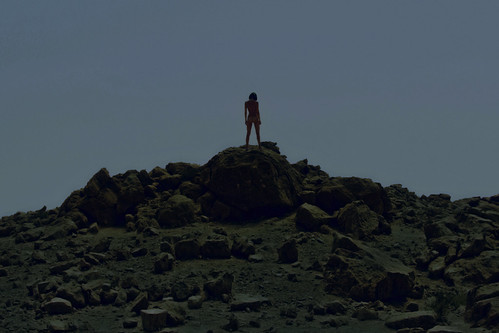

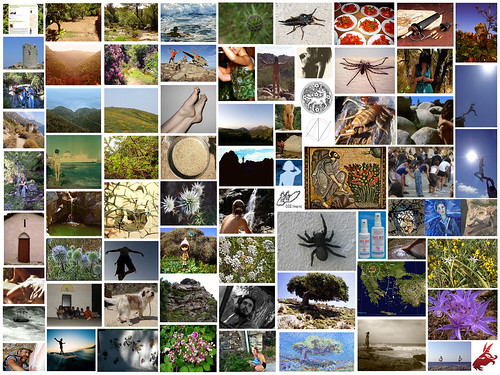
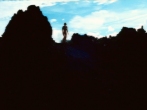
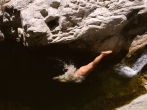
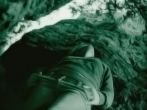

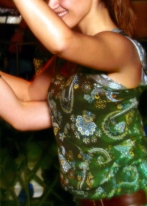
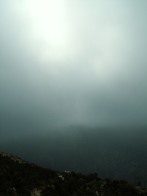



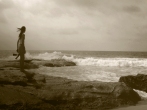
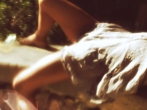
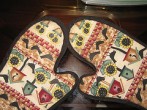
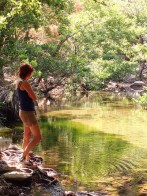

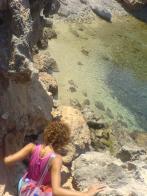


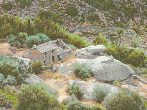
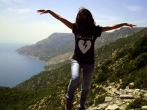

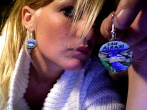

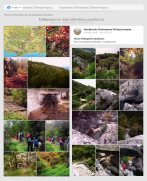
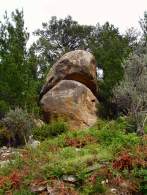
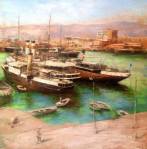
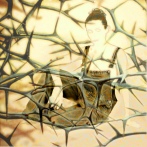
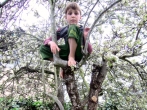
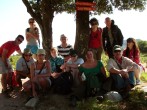
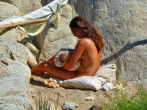



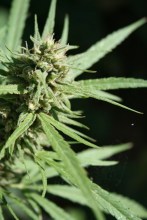
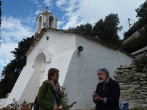
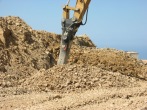




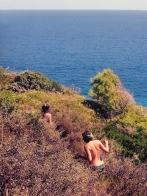
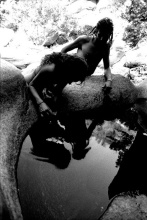



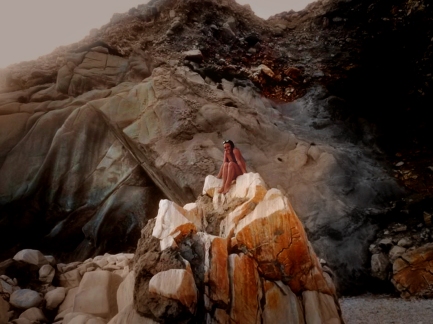






















































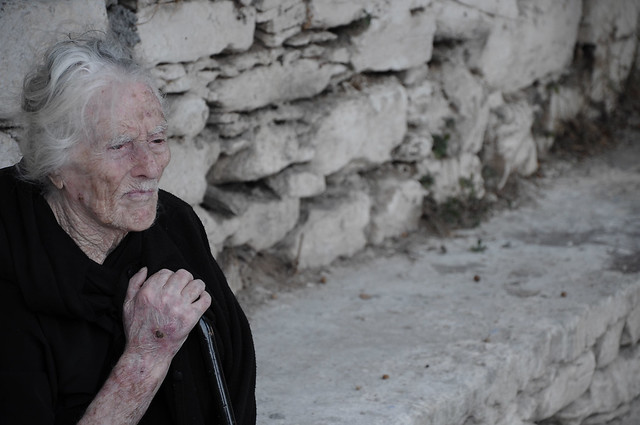








































































































Πρόσφατα σχόλια